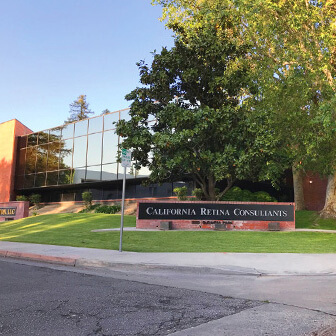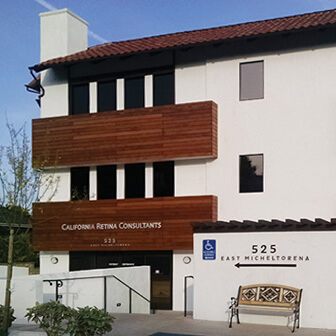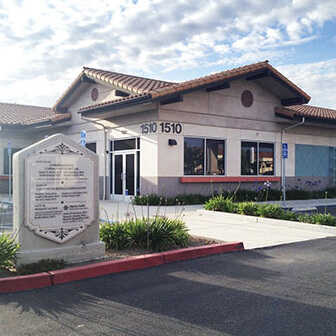CRC Clinical Research
Our mission in Clinical Research at California Retina Consultants is to provide patients with the opportunity to participate locally in national clinical trials of new treatments for severe retinal diseases. The doctors of California Retina Consultants have been recognized for their involvement in numerous national and international clinical trials of novel treatments for complications of diabetic retinopathy, macular degeneration, retinal detachments, and ocular injuries.
Participation in a clinical trial is completely voluntary. Eligibility for enrollment into a particular trial is determined through a screening process that varies from study to study. Because of the specific nature of your disease, you may not be eligible for participation. If you decide not to participate or are deemed ineligible, the doctors will continue to care for your eyes and provide you with the highest standard of care available.
What is clinical research?
Research refers to clinical trials that test medical, surgical, or behavioral intervention in people.
The clinical trials that are conducted at CRC are carefully designed studies that systematically gather data on new therapies to treat retinal diseases.
As a research department, we partner with pharmaceutical companies, large and small, to develop new drugs and therapies that may be longer-lasting, more effective, or provide long-term solutions to diseases that have a higher treatment burden.
Why is research important?
It seems like common sense for drugs to be tested before they are given to potentially sick individuals, but at the turn of the 20th century companies could sell anything to anyone who was willing to buy.
It wasn’t until 1962 that manufacturers not only had to prove a drug was safe, but that it was also effective for its intended use, before it was marketed to the public.
This laid the foundation for the clinical trials process we have today that ensures drugs are safe and effective through a carefully designed process of data collection.
Research with Retina Consultants of America
As a company RCA is comprised of over 200 sites across 20 states serving almost 2 million patients annually.
Prior to joining RCA, our practice had a research department that was conducting clinical trials and was having a significant impact in our patients’ lives.
The benefit of joining RCA is that we have access to a greater set of resources that enables us to reach an even greater number of patients! Everything from facilities and equipment to training and personnel is available to RCA research sites to improve the quality of care we can provide. We can even design and conduct our own large-scale research studies using the sites in our network!
Clinical Trial FAQ
Researchers cannot guarantee outcomes or benefits from participation. Patients receive treatment from doctors who are leaders in their field and will be very closely monitored for their safety.
No, you can quit a clinical trial at any time, for any reason. Your doctor will continue to administer the best-known standard of treatment for you.
New treatments are tested only after there is valid scientific evidence that they are likely to be effective and safe. Patients are informed of possible known risks, as well as possible unforeseen risks.
In most cases, participation in the study will make you eligible to receive exams and treatments at no cost or a reduced cost to you or your insurance. Participation in a study may also allow you to receive a new treatment before it is available to the general public. In many cases these treatments are not available to patients who do not participate in the study.
Additionally, study patients are monitored very carefully, often with additional testing that is more than usual for other patients with similar conditions. This intensive monitoring is provided at no additional cost to you or your insurance.
The greatest benefit of participating in the study may not be to you directly. Previous participants in studies have allowed us to provide the modern treatments we now have available. Your participation as a research subject will benefit future patients with your condition
Current Clinical Trials
Neovascular Age-related macular degeneration (wet AMD) is a prevalent, progressive retinal degenerative macular disease. It impacts the central area of the retina in the eye, called the macula. This causes vision to be blurry and distorted.
Dry macular degeneration causes drusen to accumulate in the retina and can damage the sensitive nerve cells.
Geographic Atrophy is a medical term that refers to later-stages of Dry AMD. It happens when patches of damaged cells, called lesions, permanently damage the retina. Causing impaired central vision.
Diabetic Macular Edema happens when high blood sugar levels affect the blood vessels in your eye. Your blood vessels leak, which causes fluid buildup and thicken your retina.
Patient Testimonials
Meet Our Team
Dante Pieramici, MD
Research Medical Director

Clinical Investigators
- Dante Pieramici, MD
- Dilsher Dhoot, MD
- Daniel Learned, MD
- Robert Avery, MD
- Ma’an Nasir, MD
- Alessandro Castellarin, MD
- Robert See, MD
- Stephen Couvillion, MD
- Nathan Steinle, MD
- Chris Wu, MD
- Dong Yang, MD











